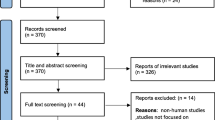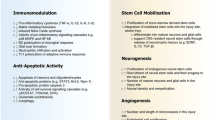Abstract
Purpose
We performed a phase I/IIa clinical trial and confirmed the safety and feasibility of granulocyte colony-stimulating factor (G-CSF) as neuroprotective therapy in patients with acute spinal cord injury (SCI). In this study, we retrospectively analyzed the clinical outcome in SCI patients treated with G-CSF and compared these results to a historical cohort of SCI patients treated with high-dose methylprednisolone sodium succinate (MPSS).
Methods
In the G-CSF group (n = 28), patients were treated from August 2009 to July 2012 within 48 h of the injury, and G-CSF (10 μg/kg/day) was administered intravenously for five consecutive days. In the MPSS group (n = 34), patients underwent high-dose MPSS therapy from August 2003 to July 2005 following the NASCIS II protocol. We evaluated the ASIA motor score and the AIS grade elevation between the time of treatment and 3-month follow-up and adverse events.
Results
The ΔASIA motor score was significantly higher in the G-CSF group than in the MPSS group (p < 0.01). When we compared AIS grade elevation in patients with AIS grades B/C incomplete paralysis, 17.9 % of patients in the G-CSF group had an AIS grade elevation of two steps compared to 0 % of patients in the MPSS group (p < 0.05), and the incidence of pneumonia was significantly higher in the MPSS group (42.9 %) compared to the G-CSF group (8.3 %) (p < 0.05).
Conclusions
These results suggest that G-CSF administration is safe and effective, but a prospective randomized controlled clinical trial is needed to compare the efficacy of MPSS versus G-CSF treatment in patients with SCI.

Similar content being viewed by others
References
Bauchet L, Lonjon N, Perrin FE et al (2009) Strategies for spinal cord repair after injury: a review of the literature and information. Ann Phys Rehabil Med 52:330–351
Park E, Velumian A, Fehlings MG (2004) The role of excitotoxicity in secondary mechanisms of spinal cord injury: a review with an emphasis on the implications for white matter degeneration. J Neurotrauma 21:754–774
Varma AK, Das A, Wallace G 4th et al (2013) Spinal Cord Injury: a review of current therapy, future treatments, and basic science frontiers. Neurochem Res 38:895–905
Bracken MB, Shepard MJ, Collins WF et al (1990) A randomized, controlled trial of methylprednisolone or naloxone in the treatment of acute spinal-cord injury: results of the second national acute spinal cord injury study. N Engl J Med 322:1405–1411
Bracken MB (2012) Steroids for acute spinal cord injury. Cochrane Database Syst Rev. doi:10.1002/14651858
Hurlbert RJ, Hadley MN, Walters BC et al (2013) Pharmacological therapy for acute spinal cord injury. Neurosurgery 72(Suppl 2):93–105. doi:10.1227/NEU.0b013e31827765c6
Nicola NA, Metcalf D, Matsumoto M et al (1983) Purification of a factor inducing differentiation in murine myelomonocytic leukemia cells. Identification as granulocyte colony-stimulating factor. J Biol Chem 258:9017–9023
Roberts AW (2005) G-CSF: a key regulator of neutrophil production, but that’s no all! Growth Factors 23:33–41
Kawabe J, Koda M, Hashimoto M et al (2011) Neuroprotective effects of granulocyte colony-stimulating factor and relationship to promotion of angiogenesis after spinal cord injury in rats. J Neurosurg Spine 15:414–421. doi:10.3171/2011.5.SPINE10421
Koda M, Nishio Y, Kamada T et al (2007) Granulocyte colony-stimulating factor (G-CSF) mobilizes bone marrow-derived cells into injured spinal cord and promotes functional recovery after compression-induced spinal cord injury in mice. Brain Res 1149:223–231
Nishio Y, Koda M, Kamada T et al (2007) Granulocyte colony-stimulating factor (G-CSF) attenuates neuronal death and promotes functional recovery after spinal cord injury in mice. J Neuropathol Exp Neurol 66:724–731
Kadota R, Koda M, Kawabe J et al (2012) Granulocyte Colony-Stimulating Factor (G-CSF) Protects Oligpdendrocyte and promotes hindlimb functional recovery after spinal cord injury in rats. PLoS One 7:e50391. doi:10.1371/journal.pone.0050391
Takahashi H, Yamazaki M, Okawa A et al (2012) Neuroprotective therapy using granulocyte colony-stimulating factor for acute spinal cord injury: a phase I/IIa clinical trial. Eur Spine J 21:2580–2587. doi:10.1007/s00586-012-2213-3
Kliesch WF, Cruse JM, Lewis RE et al (1996) Restoration of depressed immune function in spinal cord injury patients receiving rehabilitation therapy. Paraplegia 34:82–90
Jackson AB, Groomes TE (1994) Incidence of respiratory complications following spinal cord injury. Arch Phys Med Rehabil 75:270–275
Matsumoto T, Tamaki T, Kawakami M et al (2001) Early complications of high-dose methyl-prednisolone sodium succinate treatment in the follow-up of acute cervical spinal cord injury. Spine 26:426–430
Conflict of interest
None.
Author information
Authors and Affiliations
Corresponding author
Rights and permissions
About this article
Cite this article
Kamiya, K., Koda, M., Furuya, T. et al. Neuroprotective therapy with granulocyte colony-stimulating factor in acute spinal cord injury: a comparison with high-dose methylprednisolone as a historical control. Eur Spine J 24, 963–967 (2015). https://doi.org/10.1007/s00586-014-3373-0
Received:
Revised:
Accepted:
Published:
Issue Date:
DOI: https://doi.org/10.1007/s00586-014-3373-0




